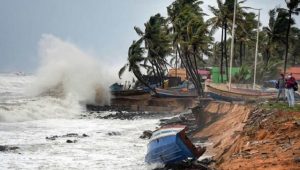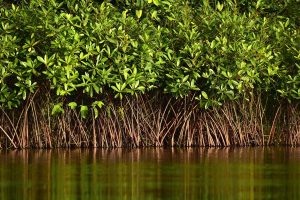Kerala To Witness High Sea Surges In Coming Years, Says Experts

On occasion of World Environment Day today a webinar was organised by Cochin based Central Marine fisheries Research Institute (CMFRI). Participants included Dr N Vasudevan, Managing Director of Forest Development Corporation, Maharashtra, PP Pramod, Chief Conservator, Forest Eastern Circle and Custodian, Vested Forest, Kerala, Dr R Ramasubramanian, Director of Coastal Systems Research Programme at M S Swaminathan Research Foundation, Chennai and Dr Grinson George, Senior Programme Specialist at the SAARC. Experts expressed their views on issues with environment specifically marine issues.
Marine experts warned that coastal areas specifically, Kerala will face high range of sea surges in coming years. These sea surges are increasing in these areas on every year basis due to the increase in sea surface temperature.
Experts speaking at webinar expressed their concern over the calamities faced by the coastal communities in these areas due to high waves and sea surges every year. Kerala coast has witnessed storm surge during Tauktae and Yaas cyclone that hit the coastal planes recently.

Cyclones hitting the coast
Expert says this is not the end this is just the beginning. The coastal areas will witness more strong storm surges in future due to rapid warming of waters in Indian ocean.
Experts says if we didn’t work to rejuvenate these coastal areas these may turn into deadly zones, zones where nobody can live, no economy can be there, no agriculture can be there and that will be only barren land with lots of water around it.
In order to rejuvenate and protect these coastal areas the experts emphasized on following points:
- Restoration of coastal vegetation – Coastal vegetation mean the mangrove forestation. Mangrove forests are categorised as ecological sensitive areas CRZ1 under CRZ notification 2011 where no new construction is permitted except for Department of Atomic Energy, Pipelines, Transmission lines, and other such Institutions.
Mangroves act as bioshields to the coastal belts and do not allow strong waves of water and cyclones to hit the land directly. These are tropical and subtropical sheltered coastlines trees and bushes growing below high water level of spring tides exhibiting remarkable capability for saltwater tolerance.

Mangrove Forests
- Conservation of coastal biodiversity, by this they mean, the coastal biodiversity is deteriorating day by day due to multiple reasons. They act as long term natural option for protecting lives of coastal people from sea storms.
In order to protect mangroves and coastal area Government of India has implemented various schemes for example, Coastal Ocean Monitoring and Prediction System implemented in 1991, Indian Ocean Interactions in Coastal Zone launched in 2005, Integrated Coastal and Marine Area Management implemented in 1998, Society of Integrated Coastal Management launched in 2010.
We should also try to save our coasts at our own level before our doings lead them to die. We should protect the biodiversity hotspots and help the government in protecting these coastal areas.










